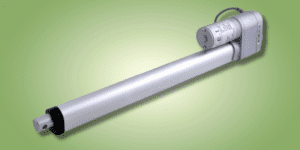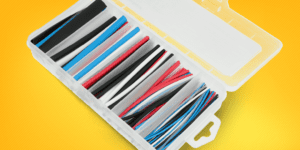Spis treści:
The situation is changing day by day. Production in the automotive industry has noticeably slowed down. The reason? Most point at two main ones – lockdowns imposed in European Union countries and semiconductor shortage crisis related to growing demand. The situation is affecting – among others – delayed deliveries of Raspberry Pi and Arduino products.
If it seems to you that smartphones have become more expensive lately, and somewhere you’ve caught a glimpse of news that leading telecom companies delivering consumer electronics into our hands are hesitant to launch the latest devices, well, you’re not the only one who thinks so. Smartphones have become more expensive. Gaming consoles and graphics cards are in short supply. TVs will soon join this problematic box of stuff, if it’s not happening already. And yet electronics have a common element at their heart – they are semiconductors and small, common electronic components. As such, the supply chain issues involve Raspberry Pi and Arduino platforms. Same goes for controllers, minicomputers, and displays. Component prices, freight charges, and fuel prices are rising in this shared storm.
Why is no one doing anything about it?
It’s not quite like that. It takes several years to build a factory that produces electronic components. Much of the means of semiconductor production rests in the hands of the three giants Intel, Samsung and TSMC Ltd. (Taiwan Semiconductor Manufacturing Company). The cost of creating a new factory is estimated at $20 billion. Equally difficult and demanding in its course is the production process – it requires sterile cleanliness, machines equipped with lasers and technology to convert wafers of silicon produced from sand into a network of billions of microscopic switches, or transistors.

Existing factories are running 24/7, and components are still in short supply. The production process for an electronic device can take up to three months. At each stage of production, the aforementioned sterility is needed, which means handling transistors in special, airtight cassettes by robots. Even a speck of dust can ruin everything.
The problems are compounded by the growing demand for graphics cards and other components used in cryptocurrency mining, and a tangle of geopolitical factors in China and Europe.
Electronics shortage – logistics and facts
News arriving in recent weeks does not bode well. An additional – fortunately temporary – factor causing delays is the upcoming Golden Week national holiday in China – operational logistics work between October 1 and 7, 2021 will be limited.

Sea transport
- In early August, one of the world’s largest seaports, a terminal in the Chinese metropolis of Ningbo, suspended operations due to COVID-19 cases diagnosed among operators. Traffic resumed on September 1, but the consequences of the suspension are and will continue to be noticeable during logistics orders.
- China’s Yantian County, which includes Shenzhen, which directly borders Hong Kong, is facing a shortage of 40’HC containers. A similar problem occurred in 2020 when most shipping lines in China’s major ports (Shanghai, Ningbo, Qingdao, Yantian, Shekou), as well as some smaller ports were unable to offer 40’GP and 40’HC containers.
- Traffic congestion is increasing at ports in Asia and Europe.
Rail transport
- In Poland, despite the completion of repair work in Terespol, traffic between Byelorussian Brest (Brześć) and Małaszewice is still difficult. Delays for trains, which will now leave China, are at least 7-10 days. Siding trains, which are undergoing repair works, require even more than 14 days to get back on the route to Małaszewicze. The service time for “new” trains is shorter.
- Circumstances above also affect drivers – their availability is severely limited, and this is compounded by the increase in the number of containers coming down to Małaszewicze, causing traffic jams at terminals and increasing container retrieval times.
- Information from 3 September about a strike of drivers in Germany, because of which a large part of trains will be stopped in Brest. Containers intended for Polish and German markets are being held up because the depot cannot stand anywhere on Polish territory (lack of space).
- Chinese railroads will limit departures in September and October to uncork border crossings.
Air transport
- Due to air service shortages, airlines are canceling some flights from China to Europe due to quarantine and increased infections. Bookings are sometimes cancelled without prior notice and confirmation of future departures.
- Airlines limit available seats to a minimum, which increases freight costs.
- No guarantee of the rate offered and bookings retention.
- Air freight remains the most stable mode of transport.
Road transport
On Monday, August 30, a decree came into force in Belarus, according to which the carriage of cargo by trucks across the Lithuanian borders can be carried out only with the use of electronic navigation seals closing the cargo space. The regulation applies to all transports performed by Polish entrepreneurs – their installation is mandatory. The exceptions are the cargoes from Kaliningrad region in transit through Lithuania and the transport of cargo using heavy and bulky vehicles with a special permit.
Our advice
- A lot of patience – the transportation emergency could last as long as the end of September, and the duration of perceived supply chain problems is difficult to estimate.
- Not delaying transportation decisions.
- Prepare for a significant increase in freight rates.
- Keeping an eye on the global political situation and following news of events whose significance also translates to logistics in Poland’s neighboring countries, such as China’s demand for the withdrawal of Lithuania’s ambassador in Beijing.
- Alternative rail transport routes from China to Slavkov leading through Ukraine instead of Belarus or to Braniewo via Kaliningrad, which reduce transit time. However, this will affect the container haulage rate (a full container is picked up in the north of Poland, an empty one is usually dropped off in Małaszewicze or Warsaw).
Electronics shortages – when will it end?

The situation we write about above is a result of many factors overlapping. For some, the year is passing quickly, but for many companies in the electronics industry, the current crisis of component shortages will take its toll for a long time to come. Many companies are asking themselves: when will it end? There is no clear answer, because the pressure is growing along with the demand for developing technology. The situation is also changing day by day because of the issues surrounding transportation. In 2017, the industry was saying to prepare for shortages in the 2018 and 2019 forecasts, and the effects of shortages could continue for years to come – and they are just continuing, or rather gaining momentum.
Many companies that thought they could weather the manufacturing and logistics storm are currently struggling to navigate the supply chain. The crisis primarily involves surface mount devices (SMDs), multilayer ceramic capacitors (an example from Japan, where the PlayStation 4 console and its popularity gains were wiped out by the lack of a specific multilayer ceramic capacitor), resistors, and of course entire semiconductor production lines.
The key market segments currently driving this impossibly saturated demand growth are automotive, industrial and consumer. This is a time to set realistic expectations with suppliers, leverage relationships and not to panic buy from untrusted sources.
How useful was this post?
Click on a star to rate it!
Average rating 0 / 5. Vote count: 0
No votes so far! Be the first to rate this post.







